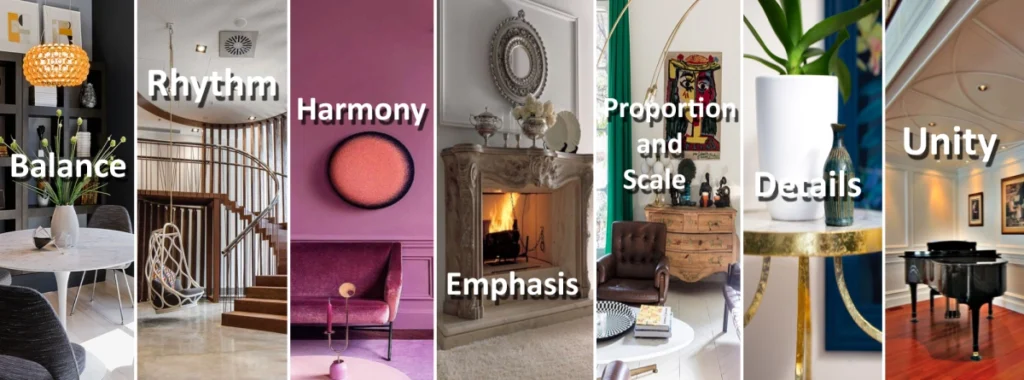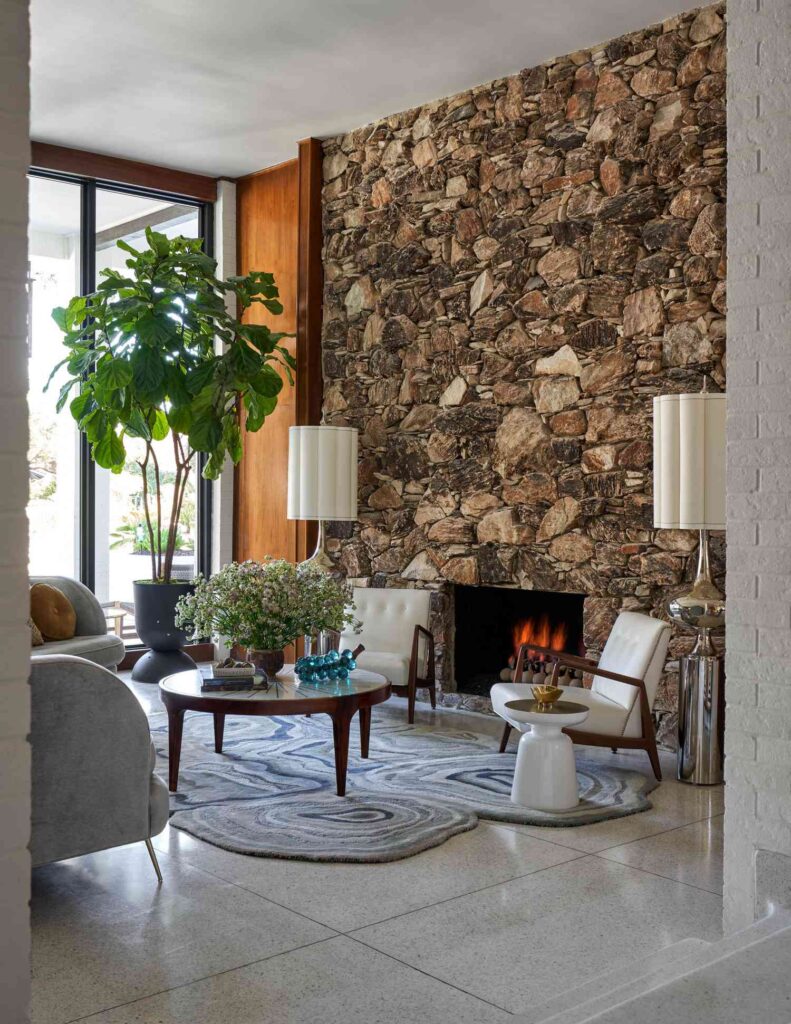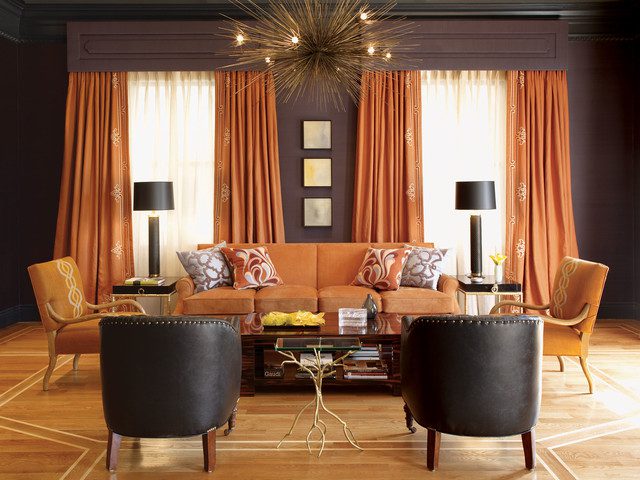When it comes to interior design there are 7 main principles which are helpful guidelines to follow along with when designing a space. In this weeks blog post we’re going to discuss all of these and explain how they are used in interior design to create a functional and aesthetically pleasing space.
So what are the 7 main principles in interior design;
- Balance
- Rhythm
- Unity
- Emphasis
- Contrast
- Harmony
- Proportion and Scale

Balance: Using balance in any room is created with the idea that elements in a room are arranged in a way that is visually pleasing and feels stable. An example of this is creating symmetric design that contains items that mirror one another- such as two of the same couches that are placed with a table in between.

Rhythm: Rhythm in interior design is achieved through the visual repetition or organized movement of various elements within a space. With this principle it can create a sense of harmony and connectedness- an example of this can be wall paper or even the same accessories used throughout a space.

Unity: Unity in interior design is the use of similarity and repetition in elements to create visual and conceptual connections and pull everything together into a cohesive whole. An example of this is to use matching colour pieces or even matching furniture sets in the same room or throughout rooms.

Emphasis: Emphasis in interior design is the purposeful development of focal points or prominent characteristics within a room to grab attention and establish a visual hierarchy. The can be a feature wall, a large painting, or even a piece of furniture that stands out against everything else in the room.

Contrast: Contrast is used in interior design by placing two or more elements with opposing characteristics together in a space. It can be accomplished using a variety of design aspects, such as colour, shape, size, material, texture or style. An example is having light bright colours throughout a space and then using something that’s bold in colour or texture to stand out.

Harmony: Harmony in interior design is created through using visually and satisfying effects of combining similar or related elements. Such as adjacent colors, similar shapes, related textures. An example is using wall art or decor that is the same colour as your throw pillows or furniture pieces.

Proportion & Scale: In interior design proportion and scale play a very important role. The scale helps interior designers understand an item in relation to the size of the room. Meanwhile the proportion is used to measure an object in relation to other things in the room, allowing these items to fit the space properly. An example of this would be a ceiling high shelf unit, that allows the scale of the room to work with the proportion of the furniture piece.

We hope this week’s blog post gave you a better understanding of the 7 principles of interior design and that for your next project you’ll be able to use what you’ve learned today! We will see you next week fellow interior design lovers!
A4 Group Construction Services INC
Author: Julia Baker
